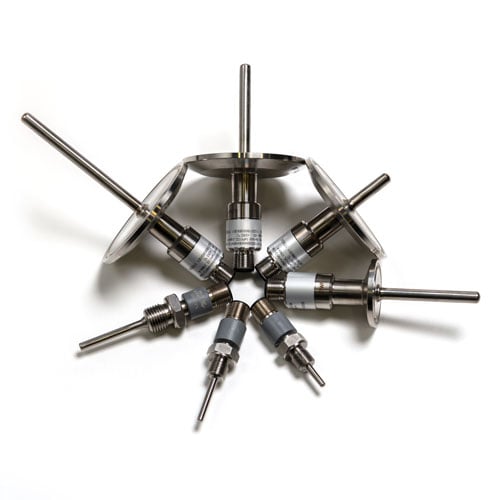Let’s start by shortly discussing what these sanitary temperature sensors are.
Temperature is one of the critical process parameters in many industries and the accurate temperature measurement in processes is a crucial consideration.
Food and Beverage, Dairy, Pharmaceutical and Life-science industries have additional requirements for the temperature measurement sensors because of their processes. They require temperature sensors that are “sanitary”, meaning that these sensors need to be suitable to be installed in hygienic and aseptic process environments.
These sensors need to be hygienic and designed to be easy to clean, often supporting the clean-in-place (CIP) process (cleaning without disassembly). The mechanical design needs to be free from any cavities, dead-pockets, gaps or anything that would complicate the hygienic cleaning.
Surface finishes of these sensors are hygienically graded and need to meet the strict standards in these industries, such as the 3-AR or EHEDG (European Hygienic Engineering & Design Group)
The material of the wetted parts in these sensors is often high-grade stainless steel, suitable for these applications.
One very common feature in these sanitary temperature sensors is that they are typically very short. This makes the calibration way more difficult than with normal temperature sensors.
Another thing that makes the calibration difficult is the large metallic flange needed for the clamp installation.
The temperature ranges typically go up to around 150 °C (300 °F), or in some cases up to 200 °C (400 °F), so that is not very challenging.


















